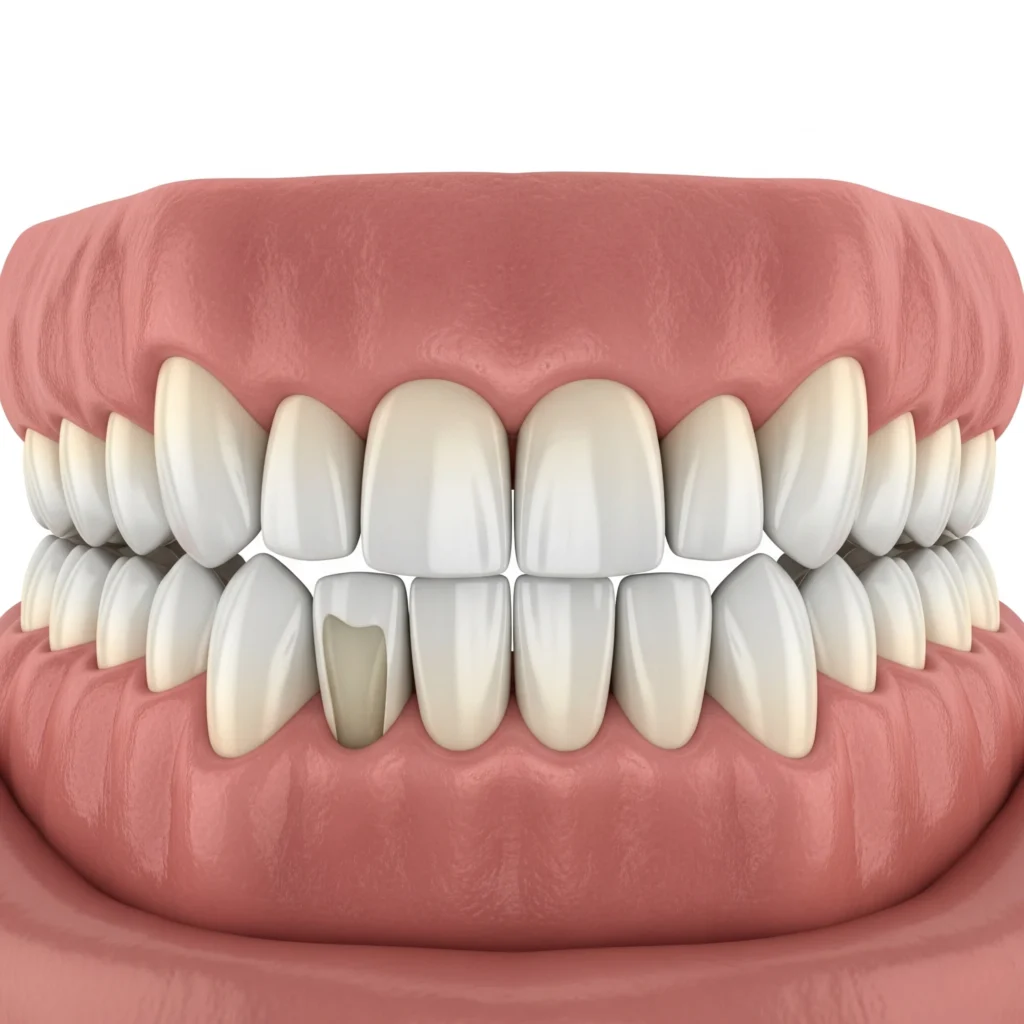Microdontia is an uncommon dental condition in which one or more teeth are smaller than average. This size difference can affect a single tooth, several teeth, or even the entire set of teeth. While the condition itself may not always cause pain, it can impact oral function, alignment, and aesthetics, making early detection and management important for maintaining a healthy and confident smile.
Microdontia can occur due to genetic factors, developmental issues, or as part of certain medical conditions. In many cases, it affects the upper lateral incisors or third molars. Although it may seem like only a cosmetic concern, untreated small teeth can lead to functional challenges such as difficulty chewing, altered speech, or improper bite alignment.
Additionally, the gaps created by undersized teeth can cause neighboring teeth to shift, resulting in crowding or spacing issues that may require orthodontic correction. This can also make certain areas of the mouth harder to clean, increasing the risk of gum disease or cavities. Since this condition can influence both appearance and oral health, awareness and timely dental evaluation are essential.

There are three primary types of microdontia, each showing distinct patterns and effects.
Microdontia can have several causes, including:
Because small teeth can be part of other medical conditions, a dental examination is important to identify any underlying issues. Early detection also helps in planning a comprehensive treatment approach.
While microdontia is often noticeable due to the appearance of teeth, other signs include:
Self-consciousness about smile appearance.
Dentists diagnose microdontia through visual examination and dental imaging. X-rays help confirm the size, position, and shape of teeth, as well as check for any other abnormalities. In some cases, dentists may also use digital smile design tools to simulate treatment outcomes, helping patients visualize their potential results before beginning care.
Identifying the condition early ensures that treatment can be planned before complications such as shifting teeth, gum recession, or bite imbalances arise.
Treatment for microdontia focuses on improving both function and aesthetics. Options include:
While microdontia itself cannot be prevented, complications such as shifting teeth, bite problems, gum irritation, and uneven wear can be minimized with early treatment. Regular dental check-ups, proper oral hygiene, and timely orthodontic or cosmetic interventions are essential for keeping the mouth healthy.
With the right treatment, individuals with microdontia can achieve a healthy, functional, and attractive smile. Restorative procedures not only enhance appearance but also improve chewing efficiency, speech clarity, and overall confidence. Advances in modern dentistry now allow for minimally invasive treatments that deliver natural-looking results in less time.
Microdontia may be uncommon, but its effects on oral function and aesthetics make it important to address early. Through restorative and orthodontic solutions, individuals can achieve a balanced smile and maintain proper oral health. If you suspect you or your child may have microdontia, seek a dental evaluation promptly to explore your options for care.
For expert diagnosis and personalized treatment, visit Unidental for compassionate and advanced dental solutions tailored to your needs.
Microdontia is relatively rare, especially the generalized type, but localized microdontia is more frequently seen in dental practice.
While it mainly affects appearance, it can lead to bite issues, shifting teeth, and oral hygiene challenges if not addressed.
Yes. In many cases, bonding, veneers, or crowns can correct the appearance without orthodontics, depending on spacing and alignment.
It can, but it is more noticeable and commonly treated when permanent teeth erupt.
Most restorative treatments, such as crowns and veneers, are long-lasting but may require maintenance or replacement after many years.
Hyderabad : +91 6305 971445
Anantapur: +91 70758 90089
Goa: +91 83266 32500
Mon to Sat 10:00AM to 8:00PM
Sun 10:00AM to 12:00PM
Lorem ipsum dolor sit amet, consectetur adipiscing elit. Ut elit tellus, luctus nec ullamcorper mattis, pulvinar dapibus leo.

Our goal is to provide friendly, caring dentistry with the highest standards in general, cosmetic, and specialist treatments. We strive to be the best dental hospital for comprehensive oral care.
We use advanced dental technology to deliver safe, precise, and painless treatments for every patient.